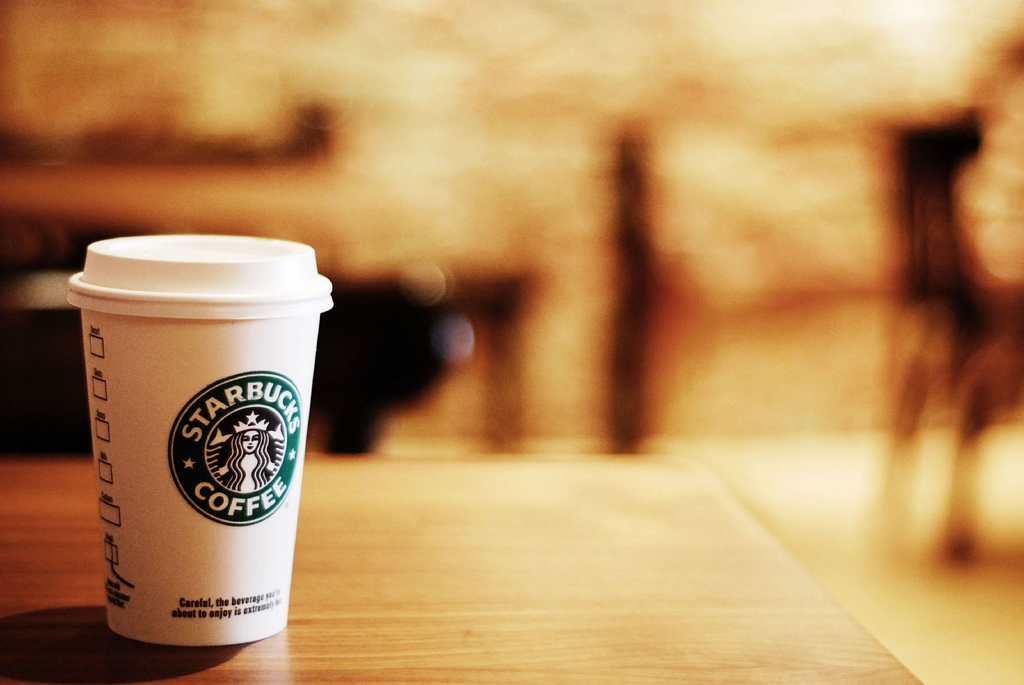As someone who has had coffee on three continents and at least 25 states in the US, I like to think I’m a coffee connoisseur. I also worked as a store manager for Starbucks Coffee for over a year. To say I love coffee would be an understatement.
During my tenure at Starbucks Coffee, I tried all of their coffees, including the special roasts. And of course I tried all of the espresso drinks as well. Starbucks coffee is good, but it’s not great. I personally think it is roasted too dark and just a mediocre bean. The best coffee I’ve ever tasted was in Vietnam, brewed fresh, in a single cup filter, at my table.
If Starbucks’ Coffee is just okay, why do people wait in line up to 30 minutes for it? Why do they pay two to three times more for a latte than they would in the family owned cafe down the street (odds are the family owned place will taste better too)? It boils down to marketing. In Starbucks’ case, relationship marketing. Starbucks knows what their customers want and goes the extra mile to make them feel like royalty.
Starbucks began in Seattle, Washington in 1971. The original store, which is still there, is at Pikes Place Market. Their claim to fame was fresh, high quality coffee beans and brewing equipment. However, in 1988 the company was purchased by Howard Schultz who changed coffee consumption as we know it.
The company expanded from plain drip coffee to hand crafted espresso drinks, inspired by espresso bars in Italy. This is where the relationship marketing revolution began.
Baristas were trained to have a “just say yes” attitude with customers. Customers could customize their drink any way they like, from a simple dopio espresso to a complex quad venti soy upside-down extra caramel sauce caramel macchiato. Any barista will craft the drink (mostly) the same, at any Starbucks in the world.
In order to focus on their customer rather than a coffee assembly line, baristas only make one or two drinks at a time, giving them a chance to create a warm personal connection with their consumer. In my store, regular customers didn’t even have to order their drink, when a barista noticed them in line, the drink order would be automatically placed and waiting for the customer when they reached the register.
As the overall brand and the “just say yes” culture grew, Starbucks expanded their marketing to include a “third place” concept. The place between home and work that people go to connect with their community. They encouraged customers to hold business meetings, relax with friends, read books and magazines and organize for the community. To encourage stores to organize philanthropic projects in their community, Starbucks pays baristas up to 40 hours a year for community service work they do.
Using this “third place” approach, Starbucks slowly but surely connected the majority of Americans with their local Starbucks store by providing a safe, comfortable environment with oversized furniture and free wifi.
Once the brand went international, Starbucks moved away from the “third place” culture and went more for a consistent, mass-produced feel while maintaining strong personal relationships. This is where drive-thru locations, Starbucks music stores, licensed stores and kiosks and mass market packaged goods came into play.
One of their most successful relationship marketing tools has been the Starbucks card. Everyone I know has gotten a Starbucks card at some point, either as a prize or as a gift. Starbucks expanded this program beyond a simple gift card into a relationship-building tool by creating the Starbucks Rewards Program.
Using the power of database marketing, they collect information about their clients and incentivize them to return again and again. At the first level, just for registering their card, Starbucks gives rewards program members a free birthday drink, discounts on coffee beans and retail products and special discounts in the mail. At the next level, more frequent guests receive free drink upgrades (syrup, extra shots, soy milk, etc). And at the final level, the Starbucks Gold Card, members receive a special gold gift card in the mail with their name on it. Not only do they get all of the benefits of the other levels, but they receive a free drink for every 10 that they buy as well as better discounts on products.
Starbucks’ ultimate success lies in integrated marketing communications. They coordinate their communication between text, e-mail, direct mail and social media to spread their message to the largest possible audience. They have pioneered new ways to pay like the Starbucks app for smartphones where customers can just scan their phone to get rewards without having to carry around their Starbucks Card.
To better understand their consumers, they conduct frequent market research to see what their customers think. At the most basic level they use in-store observations and at the most technical level they conduct formal market research using surveys and focus groups.
As small business owners we don’t have the multi-billion dollar marketing budget that Starbucks has, but that doesn’t mean that we can’t employ some of these same strategies to better connect with our consumers.
- Setup a Client Relationship Management (CRM) database to track information about your customers, past interactions, future opportunities and important dates like birthdays.
- Send thank you cards, happy birthday cards and sales promotions to customers (with their permission) using an integrated marketing approach.
- Make your customer feel special: address them by name, establish a human connection beyond business, if possible have the customer always work with the same person at your business.
- When something goes wrong, own it and make it right. Most of us can’t solve a problem by just giving someone a free drink, but it is important to make every customer feel special and appreciated, even the difficult ones.
- Reward loyal and repeat customers.
Photo Credit: *Peanut (Lauren) on Flickr
